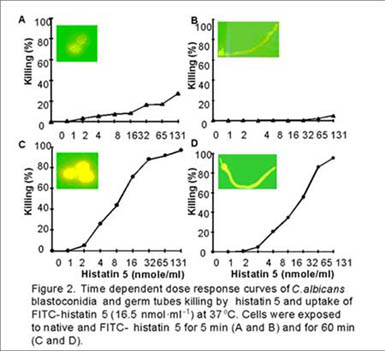
Frank Oppenheim
Professor Emeritus of Translational Dental Medicine
Research Goals
The work of my laboratory focuses on the elucidation of structure and function of salivary proteins, which play important role in host defense mechanisms. Structural analysis, peptide biomimetics employing solid phase peptide synthesis and recombinant expression methods are being used in the identification of functional domains within proteins. Functional investigations comprise mechanisms related to anti-bacterial, anti-fungal and mineral homeostasis. Emphasis on these processes is aimed at understanding the basic physiology of hard and soft tissue protection in the oral environment. Proteins such as the histatins, the proline-rich proteins and statherin are examples of proteins unique to the oral cavity. For example, the discovery of the histatin protein family showed that these small basic proteins are rich in histidine, exhibit anti-microbial properties, contain specific functional domains, and are able to kill yeasts by entering cells and target mitochondria. The mechanisms of cell death is being studied. and it has been shown that the killing effect of histatins is related to the inhibition of the respiratory chain leading to the formation reactive oxygen radicals. Other studies in progress comprise the identification and characterization of salivary protein which show selective adsorption to hydroxyapaptite forming a unique protein film on the mineral surfaces of teeth. This protein film determines de- and re-mineralization processes and dictates the early events of microbial colonization.. These studies include biophysical techniques such as NMR and mass spectrometry. Approaches of proteomics are being used to characterize proteins and peptides formed on mineral surfaces in vivo.
Recent Publications
Yin A, Margolis HC, Grogan J, Yao Y, Troxler RF, Oppenheim FG. Physical parameters of hydroxyapatite adsorption and effect on candidacidal activity of histatins. Arch Oral Biol. 2003 May;48(5):361-8
Becerra L, Soares RV, Bruno LS, Siqueira CC, Oppenheim FG, Offner GD, Troxler RF. Patterns of secretion of mucins and non-mucin glycoproteins in human submandibular/sublingual secretion. Arch Oral Biol. 2003 Feb;48(2):147-54.
Piludu M, Rayment SA, Liu B, Offner GD, Oppenheim FG, Troxler RF, Hand AR. Electron microscopic immunogold localization of salivary mucins MG1 and MG2 in human submandibular and sublingual glands. J Histochem Cytochem. 2003 Jan;51(1):69-79.
Liu B, Rayment SA, Soares RV, Oppenheim FG, Offner GD, Fives-Taylor P, Troxler RF. Interaction of human salivary mucin MG2, its recombinant N-terminal region and a synthetic peptide with Actinobacillus actinomycetemcomitans. J Periodontal Res. 2002 Dec;37(6):416-24.
Gusman H, Travis J, Helmerhorst EJ, Potempa J, Troxler RF, Oppenheim FG. Salivary Histatan 5 is an inhibitor of both host and bacterial enzymes implicated in periodontal disease. Infect Immun 2001. 69:1402-1408.
Grogan J, McKnight CJ, Troxler RF, Oppenheim FG. Zinc and copper bind to unique sites of histatin 5. FEBS Lett 2001. 491:76-80.
Helmerhorst EJ, van’t Hof W, Breeuwer P, Veerman ECI, Abee T, Troxler RF, Nieuw Amerongen AV, Oppenheim FG. Characterization of histatin 5 with respect to amphipathicity, hydrophobicity, and effects on cell and mitochondrialmembrane integrity excludes a candidacidal mechanism of pore formation. J Biol Chem2001. 276-5643-5649.
Gusman H, Grogan J, Kagan HM, Troxler RF, Oppenheim FG. Salivary histatin 5 is a potent competitive inhibitor of the cysteine proteinase clostripain. FEBS Lett 2001. 489:97-100.
Gusman H, Lendenmann U, Grogan J, Troxler RF and Oppenheim FG. Is salivary histatin 5 a metallopeptide? Biochim Biophys Acta 2000. 1545:86-95.
Yao Y, Lamkin MS and Oppenheim FG. Pellicle precursor protein crosslinking: characterization of an adduct between acidic proline-rich protein (PRP-1) and statherin generated by transglutaminase. J Dent Res 2000. 930-938.
Gyurko C, Lendenmann U, Troxler RF, and Oppenheim FG. Candida albicans mutants deficient in respiration are resistant to the small cationic salivary antimibrobial peptide histatin 5.Antimicrobial Agents and Chemotherapy 2000. 44:348-354.
Recent Grants
Microbicidal Salivary Histidine-Rich Proteins, NIDCR-RO1
Anionic Salivary Proteins in Dental Integuments, NIDCR-RO1
Postdoctoral Training Program In Oral Biology, NIDCR-T32

- Departments
- Translational Dental Medicine
- Affiliations
- Faculty